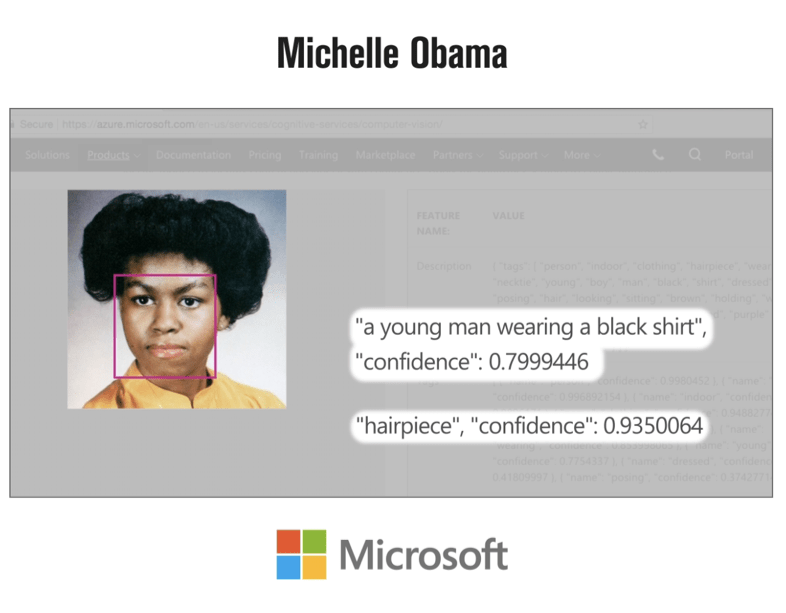We have to protect the rules-based order by banning all forms of modern technology.
No, no. It’s not for a right-wing Conan fantasy.
It’s to serve the single purpose of all of human civilization: protect black people’s feelings.
Can you even imagine how it feels to have grossly dark skin, a big flat nose, cartoonishly high crime rates, and no personal hygiene – and then on top of that, to have some robot hassling you?
AP:
Inside a cavernous stone fortress in downtown Pittsburgh, attorney Robin Frank defends parents at one of their lowest points – when they risk losing their children.
The job is never easy, but in the past she knew what she was up against when squaring off against child protective services in family court. Now, she worries she’s fighting something she can’t see: an opaque algorithm whose statistical calculations help social workers decide which families should be investigated in the first place.
“A lot of people don’t know that it’s even being used,” Frank said. “Families should have the right to have all of the information in their file.”
From Los Angeles to Colorado and throughout Oregon, as child welfare agencies use or consider tools similar to the one in Allegheny County, Pennsylvania, an Associated Press review has identified a number of concerns about the technology, including questions about its reliability and its potential to harden racial disparities in the child welfare system. Related issues have already torpedoed some jurisdictions’ plans to use predictive models, such as the tool notably dropped by the state of Illinois.
According to new research from a Carnegie Mellon University team obtained exclusively by AP, Allegheny’s algorithm in its first years of operation showed a pattern of flagging a disproportionate number of Black children for a “mandatory” neglect investigation, when compared with white children. The independent researchers, who received data from the county, also found that social workers disagreed with the risk scores the algorithm produced about one-third of the time.
County officials said that social workers can always override the tool, and called the research “hypothetical.”
Child welfare officials in Allegheny County, the cradle of Mister Rogers’ TV neighborhood and the icon’s child-centric innovations, say the cutting-edge tool – which is capturing attention around the country – uses data to support agency workers as they try to protect children from neglect. That nuanced term can include everything from inadequate housing to poor hygiene, but is a different category from physical or sexual abuse, which is investigated separately in Pennsylvania and is not subject to the algorithm.
“Workers, whoever they are, shouldn’t be asked to make, in a given year, 14, 15, 16,000 of these kinds of decisions with incredibly imperfect information,” said Erin Dalton, director of the county’s Department of Human Services and a pioneer in implementing the predictive child welfare algorithm.
Critics say it gives a program powered by data mostly collected about poor people an outsized role in deciding families’ fates, and they warn against local officials’ growing reliance on artificial intelligence tools.
If the tool had acted on its own to screen in a comparable rate of calls, it would have recommended that two-thirds of Black children be investigated, compared with about half of all other children reported, according to another study published last month and co-authored by a researcher who audited the county’s algorithm.
Advocates worry that if similar tools are used in other child welfare systems with minimal or no human intervention–akin to how algorithms have been used to make decisions in the criminal justice system–they could reinforce existing racial disparities in the child welfare system.
“It’s not decreasing the impact among Black families,” said Logan Stapleton, a researcher at Carnegie Mellon University. “On the point of accuracy and disparity, (the county is) making strong statements that I think are misleading.”
…
The Allegheny Family Screening Tool is specifically designed to predict the risk that a child will be placed in foster care in the two years after they are investigated. Using a trove of detailed personal data collected from birth, Medicaid, substance abuse, mental health, jail and probation records, among other government data sets, the algorithm calculates a risk score of 1 to 20: The higher the number, the greater the risk.
…
CMU researchers found that from August 2016 to May 2018, the tool calculated scores that suggested 32.5% of Black children reported as being neglected should be subject to a “mandatory” investigation, compared with 20.8% of white children.
This is a known problem in the field. The images below are real examples from a Time article published in February 2019.
It’s time to address the racist nature of artificial intelligence.
 Daily Stormer The Most Censored Publication in History
Daily Stormer The Most Censored Publication in History








